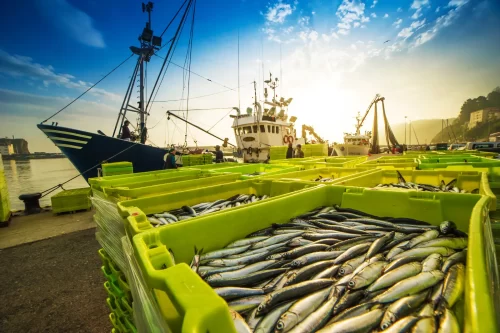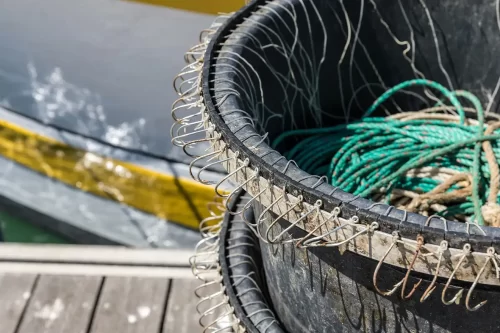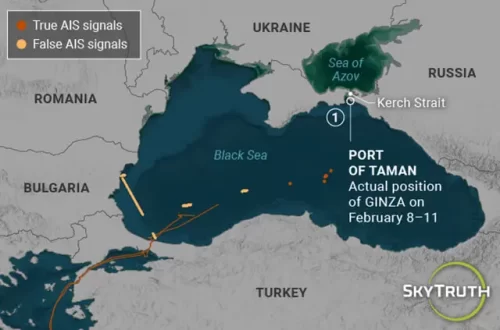Partnership and collective understanding will set the course for Global Fishing Watch’s work ahead
And so ends another year—a year that many are perhaps eager to close out. I think it’s fair to say that none of us imagined 2020 would have panned out like this. Twelve months ago we were all preparing for a super year for the ocean, but the outbreak of COVID-19 changed the world and brought the cancelation of nearly every event this past year, while others were postponed or moved to virtual platforms.
The pandemic has taken its toll on our healthcare systems and vulnerable populations, and it has caused a dramatic disruption in the global economy; we have seen the impact it’s had on global fishing efforts and are keenly aware of the burden it placed on coastal communities. But this experience also shows us how important it is that we keep working toward a sustainable future—a post-COVID world that is more resilient, more sustainable, and more equitable.
With so much of the world on lockdown during the majority of the year, Global Fishing Watch was keen to focus its efforts on the impacts it could make from afar.
Reflecting on 2020
Stewardship of the ocean, and its resources, transcends exclusive economic zones, making protection not simply a national or regional matter. After nearly 35 years working in the maritime community, one thing is evident to me: effective governance of the ocean cannot happen without international cooperation.
As a North Star, we turned to recommendations from the High Level Panel for a Sustainable Ocean Economy. Made up of 14 world leaders, the Ocean Panel is tasked with building momentum towards the effective protection, sustainable production, and equitable prosperity of the ocean. Their message is clear: we must bring collective understanding and knowledge of ocean sustainability to ensure that science is underpinning future decision-making.
I had the privilege of co-authoring a blue paper in support of the Ocean Panel, on the drivers of illegal, unreported and unregulated (IUU) fishing, which identified three urgent actions:
- Adopt global transparency in fisheries
- Enact tighter controls in ports
- Enhance collaboration
At the core of these recommendations are data and knowledge sharing—two areas where we have seen considerable gains and where Global Fishing Watch brings a unique added value to the transformations highlighted by the Ocean Panel.
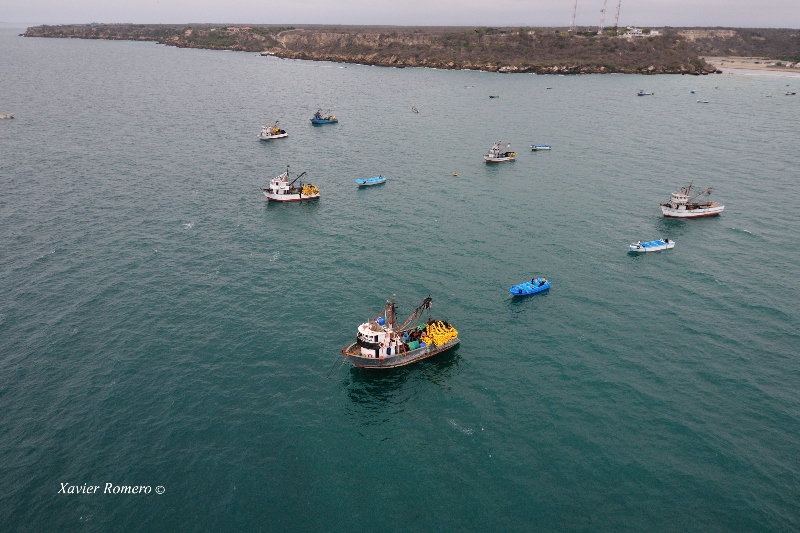
A wave of transparency
At Global Fishing Watch, transparency means creating and publicly sharing knowledge about activities at sea with the hope of driving fair and effective governance of our marine resources. We recognize that despite its importance and the threats it faces, the ocean remains the least observed part of our planet. The lack of visibility—the lack of accountability—allows unscrupulous behavior like, IUU fishing, to thrive. But this is changing.
Since 2017, a growing number of progressive governments have embraced public sharing of their vessel monitoring system data. This year two more countries— Costa Rica and Ecuador— signed agreements with us, making a total of six countries that now understand the benefits of public data and common understanding of fishing activity. We’re seeing meaningful leadership emerge throughout Latin America as countries make significant strides in their transparency and sustainability initiatives.
We’ve also seen new efforts in countries that have already shared their vessel tracking data on our map, including Peru, where a new regulation was recently published requiring foreign fishing vessels to be equipped with satellite tracking equipment, as well as transmit their last six months of positioning, before entering Peruvian ports.
It’s not just Peru, however, that has acknowledged the importance of port control. All fish must enter through a port before going to market. So instead of investing resources into costly at-sea enforcement, efforts have pivoted to strengthening port measures and information sharing.
This concept came to fruition in 2009 when the Food and Agriculture Organization of the United Nations adopted the Port State Measures Agreement, an international treaty aimed at curbing IUU fishing. To date the Agreement has a total of 67 Parties, including the European Union, United States, and Japan. But for the treaty to reach its full potential and succeed in keeping IUU catch out of the supply chain, port inspectors must have vessel information—identity, history, catch information—readily available to them.
Sharing data is as much about demonstrating compliance across good vessels as it is about exposing bad ones. In recognition of this, and in partnership with Trygg Mat Tracking (TMT), we are currently developing an application that can be used to profile vessels—their journeys, identification, track histories, the list goes on. We will be piloting the prototype with four African countries in 2021, working closely with port authorities to better understand how to classify information that will be useful during inspections.
We have increased our reach and regional presence, welcoming our first team members based in Africa and completing our scoping initiatives in countries across the Pacific, which culminated in presenting our findings to the influential Pacific Islands Forum Fisheries Agency, to which we are now an observer, for the first time.
We will continue to strengthen our partnerships across Latin American, Asia and the Pacific over the coming months, engaging with governments, research institutions, and maritime security agencies alike to advocate for increased transparency in their waters.
Women in Maritime, South Africa
August also brought a new initiative with Women in Maritime Africa to promote capacity development, entrepreneurship development and employment for women in ocean management positions. The training program attracted 25 participants from the South Africa chapter and hosted technical development sessions on a variety of topics including how data can support the implementation of fisheries management policies and port State control. We were thrilled to engage with so many participants who were eager to apply our data and analysis to their work, mainly in government and the fisheries industry.
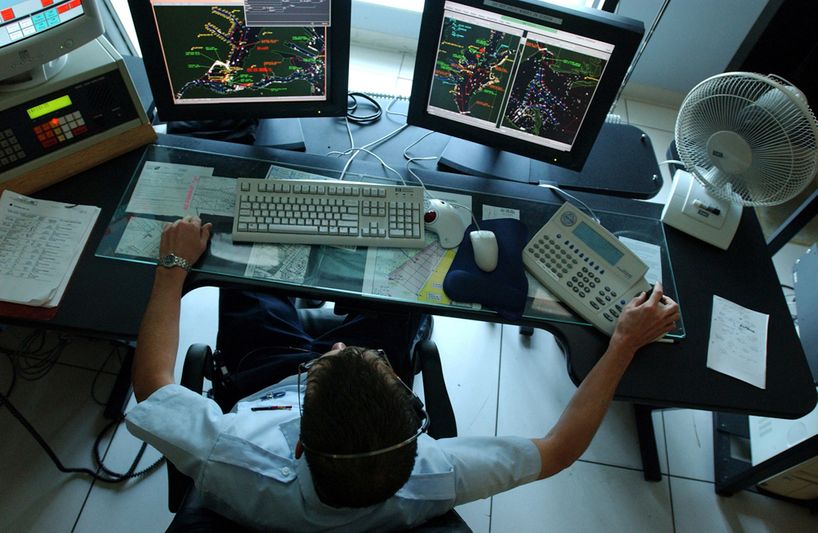
Partnership: on the water
Neither fish nor IUU fishers honor political boundaries, and while ports controls are vital we have to deter IUU fishing out at sea and increase patrol efficiency. With IUU fishing central to their new strategy, the U.S. Coast Guard (USCG) is using our platform to assist in their patrols. The USCG Cutter DOUGLAS MUNRO recently completed a two month patrol covering nearly 13,000 miles throughout the vast waters of the Pacific Ocean in support of Operation North Pacific Guard—a multinational annual high seas fisheries law enforcement operation designed to combat IUU fishing. Building on our 2019 collaboration and in concert with Global Fishing Watch’s key partners, Canada and Japan, we had the privilege of supporting this year’s effort with shoreside intelligence and analysis that led to 11 at-sea vessel inspections. Described by the USCG as a “force multiplier” to their efforts, Global Fishing Watch stands ready to provide further monitoring and analysis in support of the coast guard and we look forward to future collaborations in the new year. In October, we also supported a successful IUU fishing patrol undertaken by the Ghana Navy with support from the United Nations Office on Drugs and Crime and TMT, resulting in the arrest of five ships and an additional four ships receiving cautions. By combining efforts, this multi-agency cooperation took advantage of technological insights and coordinated law enforcement to provide on-the-water solutions to combat illegal fishing. It also served as an illustration of the benefits extended through a partnership agreement we signed in early November with Vulcan Inc., one I was especially pleased to announce. Through this collaboration, our two organizations aim to bolster enforcement efforts by delivering the best of both our platforms—our map and Vulcan’s maritime information tool, Skylight. With the combination of our vessel monitoring capabilities, we hope to drive transparency and fisheries management in support of government efforts to combat IUU fishing.Partnerships are key when it comes to untangling the multifaceted threats the ocean currently faces; we need to unify our efforts towards a common goal and work alongside each other in complementary ways.
Partnership: eyes in the sky
In late June, we completed a joint analysis with TMT that revealed almost 200 Iranian vessels operating illegally in Somali and Yemeni waters. This was the culmination of work with partners in the Northwest Indian Ocean region, including the Somali government, to identify large-scale illegal fishing occurring inside their waters. The analysis exposed one of the largest illegal fishing operations occurring in the world and supported subsequent government investigations, which led to the arrest of an Iranian vessel by Yemeni naval forces in November.
But we would soon expose an even larger illegal fleet.
This reveal came in July when Science Advances published a study led by Global Fishing Watch, “Illuminating Dark Fishing Fleets in North Korea”. A collaboration between partners from South Korea, Japan, Australia and the United States, this groundbreaking research revealed the largest known case of illegal fishing perpetrated by vessels originating from one country operating in another nation’s waters. Combining four kinds of technology, the study exposed hundreds of ‘dark’ vessels (those not publicly broadcasting their location) originating from China in an illegal fishing operation responsible for stealing more than US $440 million of Pacific flying squid from North Korean waters during 2017-2018. The study was well received, garnering international media attention and facilitating dialogue that has led to enhanced monitoring and stronger regional collaboration. We’ll soon be publishing a 2020 analysis of North Korean waters at the start of next year where our initial findings demonstrate a marked reduction in fishing activity.
Partnership: probing for answers
We’ve also focused our efforts on forging relationships with research institutions. Building on the example of engagement we have with Japan’s Fisheries Research Agency, we signed a two-year research agreement with the National Taiwan Ocean University. Together we’re developing methods to detect and identify potential IUU fishing with machine learning technology. By investigating certain detection techniques, including the identification of dark vessels, we can strengthen the monitoring of both domestic and foreign fleets, paving the way for a more holistic approach to fisheries management.
As a result of our continued work with researchers from the Environmental Markets Solutions Lab at the University of California, Santa Barbara, we launched a new study demonstrating how satellite technology can be harnessed to help distinguish fishing vessels that have a high risk of forced labor on board. The study, published in Proceedings of the National Academy of Sciences, serves as a proof-of-concept identifying the intersection of forced labor and vessel monitoring. We are eager to gather input from governments and enforcement agencies alike to help evolve the development of the model.
Building collaborative and trustworthy relationships with academia and those from the research community lies at the heart of our work and serves as a cornerstone in our approach to helping create a new era of ocean governance.
Fish and Ships
In September, our research team hosted “Fish and Ships”, a virtual workshop held to brainstorm ideas on how fish and vessel tracking can be combined to better understand, and potentially predict, catch patterns. Scientists, accompanied by fisheries managers from 15 countries, put their heads together to map out collaborative research questions that focused on three main topics: identification of “hot spots” where overlap occurs between fishing fleets and populations of tuna, shark, and billfish; determination of oceanographic drivers that influence the movement of fish and ships, with the goal of improving overlap predictions and; better understanding of AIS and other official datasets to ascertain how exactly they can be used as indicators.
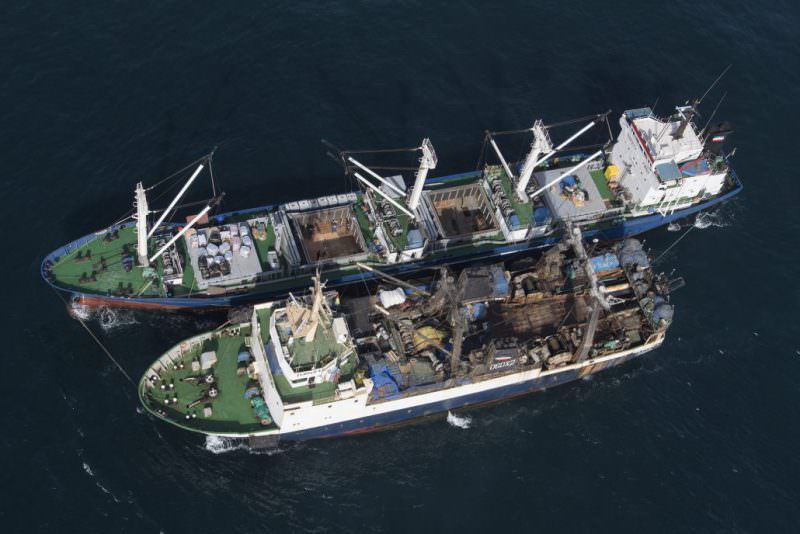
Partnership: tools, managers and training
The historically hidden world of at-sea transshipment became a whole lot clearer on July 28 when we, along with The Pew Charitable Trusts, launched the carrier vessel portal, a new interactive global monitoring platform that specifically focuses on transshipment activities taking place out at sea. Free to the public, the portal combines data from public vessel registries and machine learning techniques to provide greater transparency of transshipment activity. By analyzing vessel tracks, regulators, policymakers and researchers can pinpoint encounters between fishing and carrier vessels, as well as identify ports each vessel has frequented. The first-of-its-kind, we believe this portal will be a game changer when it comes to visualizing the impact of transshipment and help drive the reform that’s needed.
Another new partnership I’m proud to have solidified this year came at the end of summer when Global Fishing Watch became an official observer to the International Monitoring, Control and Surveillance Network. In late August, we were granted status in recognition of the synergies between our two organizations when it comes to combating illegal fishing, and also in part of the Network’s desire to expand their relationships with select organizations beyond State agencies and those directly involved in enforcement.
The end of the year also kicked off a new partnership with Human Rights at Sea, a U.K.-based organization that seeks to raise global awareness of human rights abuses taking place at sea. Recent reports illustrate the disturbing stories told by fishers and fisheries observers of people being trafficked onto fishing vessels where they are held against their will. By increasing transparency of the fishing sector, we can better understand vessel activity and patterns that have been associated with such abuse and then use that information to inform human rights initiatives. Through this new collaboration we aim to bring together policy and technology solutions under common measures and ensure that information is readily available to all stakeholders.
A new era in ocean governance
Global Fishing Watch has had quite a busy year; I hope from my summary it is apparent that the breadth of what we are doing is based on collaboration. Through powerful and strategic partnerships we can look forward to taking on more critical ocean challenges in 2021. We have a vision: Healthy, productive and resilient oceans where transparency drives fair and effective governance of marine resources in support of biodiversity and sustainable development. Our commitment rests on the creation and public sharing of knowledge about human activity where transparency informs and drives better governance.
As we enter 2021, a new and exciting partnership with Dona Bertarelli Philanthropy will see the launch of Global Fishing Watch Marine Manager, a dynamic new portal that helps support the design, management and monitoring of marine protected areas. Both Dona and I want this project to be highly collaborative and we look forward to announcing the partnership in the late spring.
I am also committed to bringing together more expertise and complementary technologies, through a multi-partner initiative, to provide cost-effective analysis and alerts to governments and agencies, supercharging efforts to stamp out IUU fishing.
Collaboration is what makes it all work—it’s the foundation of success. But more is needed if we are to make considerable strides in protecting the ocean and ensuring sustainable resources for generations to come. The responsibility of ocean governance falls on all of us; the better we can monitor and understand activity taking place at sea, the better stewards of the ocean, and its marine resources, we can be.
Tony Long is the chief executive officer of Global Fishing Watch.
